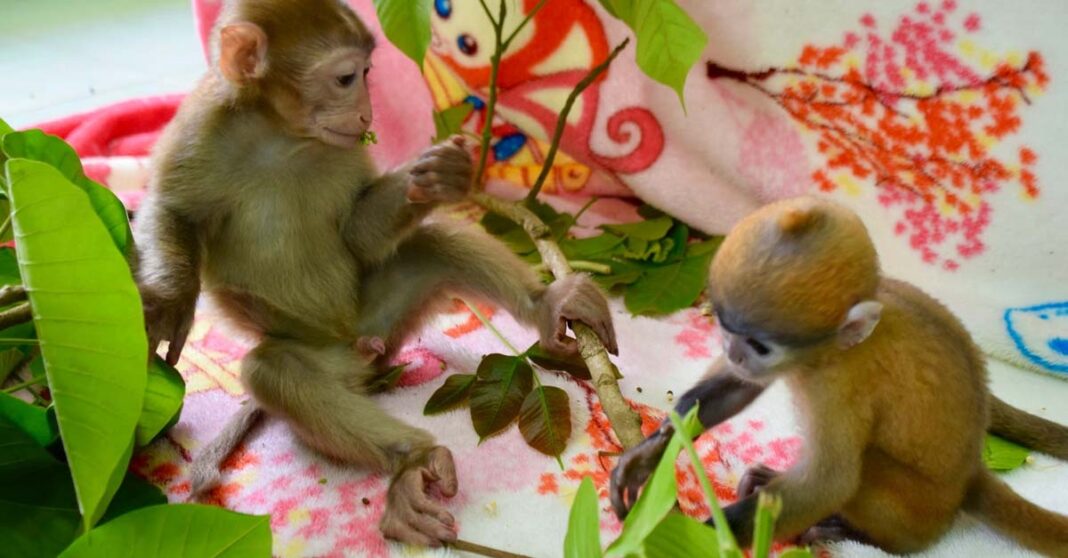Two monkeys kept as pets became the center of social media debate recently after being confiscated by wildlife authorities and placed in a wildlife conservation center.
The two animals had been in the care of a man in Luang Prabang Province who had been raising them as pets and posting videos of them to his TikTok channel.
The TikTok channel became increasingly popular, attracting large numbers of viewers.
Authorities confiscated the captive animals after being made aware of the TikTok videos, placing them in the care of wildlife professionals.
Mr. Bounmy Savath, Deputy Director-General of the Luang Prabang Provincial Department of Agriculture and Forestry, told the media on Monday that her department had instructed local authorities to visit the location where the animals were being kept.

Investigations revealed a baby Indochinese grey langur and a young Assamese macaque being kept as pets at the house.
Mr. Bounmy said that in accordance with the Lao Law on Wildlife and Aquatic Resources and other relevant legislation, the animals found at the property were considered category one protected species.
The owner of the primates was issued a warning and instructed to release the animals into the custody of authorities, according to Mr. Bounmy.
News of the confiscation divided social media in Laos, with some users praising the government’s actions, while others sympathized with the owner.
Some social media users said they worried that the monkeys would experience anxiety after being separated from their owner.
Ms. Bounmy said that those who wish to raise wild animals must provide a detailed proposal to the relevant sector, while a suitable habitat or enclosure must be verified by wildlife authorities.
The Lao Conservation Trust for Wildlife, where the monkeys are being housed, made a statement on its Facebook page recently.
“We are happy to let everyone know that both of the young primates are doing very well! They quickly adjusted to their new surroundings, have a strong appetite, and enjoy playing,” the statement reads.
“We absolutely understand that the person who took care of these animals loved them very much as well as the many [fans] that enjoyed watching them on social media. It is not our mission to cause people sadness, but it is our belief that wildlife deserve the freedom to live in a situation where they can act as naturally as possible. In the case of these two animals, it is living in a more natural environment and with other members of the same species.”
According to the Trust, the animals will be assessed to ensure they can survive in the wild, at which point they will be released.
If they do not meet the criteria for release, they will be kept at the center where they can live among others of their own kind, receiving world-class veterinary care in species-specific enclosures with specially made diets.



